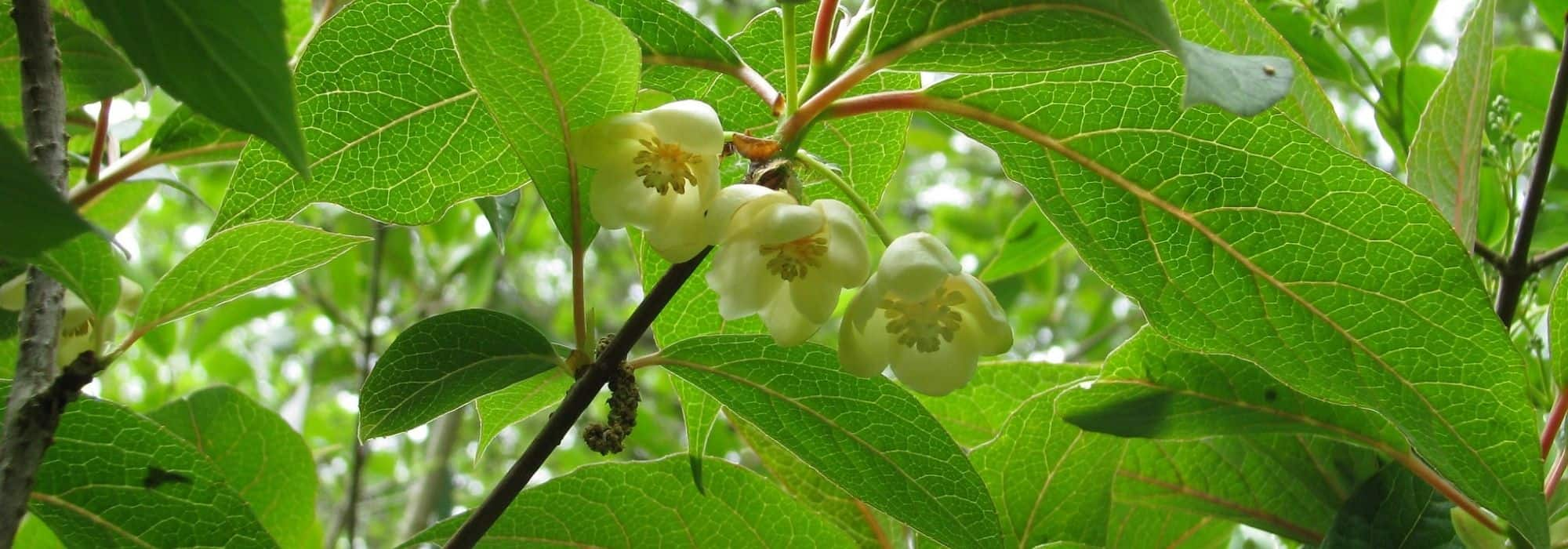
Pruning and training of Schisandra
Discover our tips for pruning and training this climbing plant that produces five-flavour berries
Contents
Climbing plant of Asian origin, Schisandra forms lianas that can reach lengths of up to 10 metres if it receives all the cultural conditions it needs. This includes rich, cool, well-drained soil and a semi-shaded position, as in its natural habitat, schisandra often grows in understorey. Very hardy, schisandra also requires little care, but it will delight you with its lovely spring flowering, either white or dark red, delicately scented, and its clusters of red berries with five flavours, known in Chinese pharmacopoeia. However, as a voluble liana, schisandra requires a support to climb. We will explain how to prune and train schisandra so that it adorns and conceals an unsightly wall or winds around a pergola.
Why training a schisandra?
Some climbing plants manage to ascend along a support on their own, thanks to the climbing roots, tendrils, or suckers they possess. For instance, honeysuckle, wisteria, jasmine, and ivy cling to their supports without much human intervention. Others require a support to cling, wrap, or entwine in order to reach new heights. Schisandra belongs to this category of climbing plants that need a support to be guided, oriented, and supported. In its natural habitat in China, India, Mongolia, and Myanmar, where it often grows in understorey, schisandra directs its voluble lianas around trees. Therefore, if you wish to plant schisandra to enjoy its stunning flowering and the production of edible berries, you will need to provide it with a support to dress a wall, green a balcony, or delineate spaces in a garden.
To support schisandra, you can choose from several options. Schisandra can wrap around a pergola, a gazebo, or an arch at the entrance of a garden. It can also be guided against a wall, which it will advantageously cover if it is not too aesthetically pleasing. In this case, a wooden trellis or a structure of metal wires is necessary to guide the lianas of schisandra.
How to train Schisandra?
The training of a schisandra involves the presence of a support for it to thrive optimally. It is possible to fix a trellis to the wall, strong enough to withstand the lianas. Wood is ideal, but you can also stretch wire or steel cables horizontally and vertically at regular intervals. Metal masonry frames can also be used to create your trellis. As schisandra can climb up to ten metres, it is essential to choose a sufficiently sturdy support. So, forget about plastic trellises or overly lightweight mesh.

With its lianas, schisandra is well-suited for training
In any case, make sure to always leave about ten centimetres between the frame and the wall so that the schisandra can insinuate itself and, most importantly, breathe. With this gap, air circulates properly, helping to prevent diseases.
Discover other Schisandra
View all →Available in 1 sizes
Available in 1 sizes
Available in 1 sizes
Available in 1 sizes
When it comes to planting...
Schisandra thrives in both partial shade and bright light, making a wall that receives morning sun and afternoon shade an ideal location.
Once schisandra is in the ground, you can start guiding its lianas towards the support by attaching them with ties, raffia, or even better, coconut string or hemp rope, which are sturdier and more durable. Remember to fan out the branches so they cover the entire support. However, avoid passing the lianas behind the support as it could be damaged. It’s better to train them on the outer face of the support.
As schisandra grows (rather slowly), continue to attach the young shoots, which can be identified by their green hue.
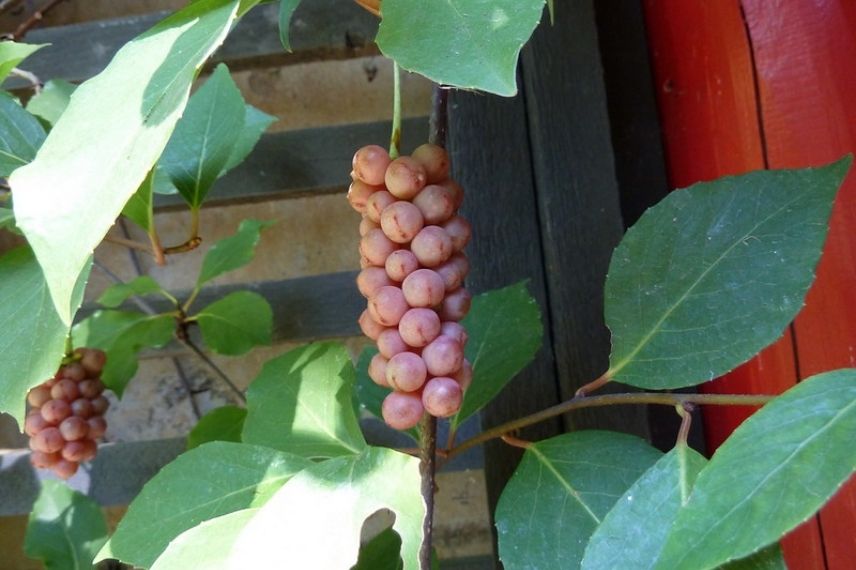
As they lignify, schisandra shoots naturally coil around their support
Later, as they lignify, they turn reddish and form wood. As they mature, the lianas easily intertwine to form a dense bush.
Over the years, schisandra will cover the support you provided. Its flowers are stunning, as are its pendulous clusters of small red berries with five flavours.
Read also
Drying schisandra berriesHow to prune a schisandra?
Pruning is not obligatory but will help to remove dry, diseased, or dead branches. Pruning will also aim to aerate the heart of this arborescent liana, direct its growth, reshape it, or reduce the branches. If you decide to prune the schisandra, do so after flowering to highlight the clusters of berries. Alternatively, intervene at the end of winter, in February-March. Proceed sparingly, using a clean and disinfected pruning shears.
- Subscribe!
- Contents
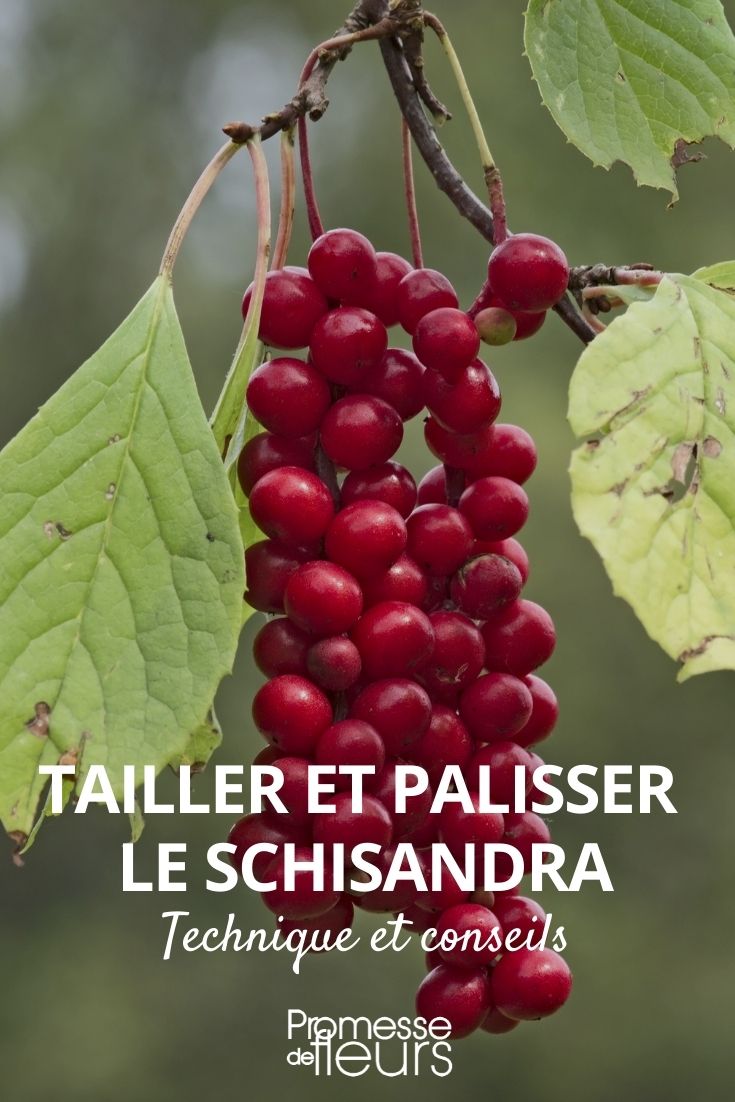
































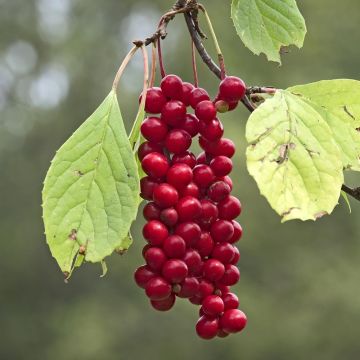

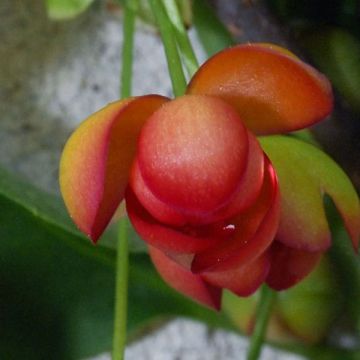
Comments